6 strategies for maximizing online sales for enterprises

No matter your business model, attracting customers and increasing online sales have become universal objectives. Whether you’re marketing a purely e-commerce business or one that has both an online and brick-and-mortar presence, you want to encourage more of your existing and potential customer base to convert.
When it comes to maximizing online sales for enterprises, it’s all about implementing the right marketing strategies. Let’s look at six ways you can increase conversion rates and boost e-commerce sales.
1. Make sure your website is ready for e-commerce
The first step in maximizing online sales for enterprises is to ensure your website is ready and optimized for ecommerce. Specifically, you want your website to be mobile-friendly and trustworthy.
It’s becoming more common for consumers to make online purchases from anywhere using their mobile devices. In fact, it’s projected that more than 10% of all retail sales will be made via mobile devices by 2025. Not to mention that mobile device sales tend to increase during the Black Friday-Cyber Monday (BFCM) sales period. For instance, during the 2022 BFCM weekend, 42% of sales were made on mobile devices.
You can make it easy for potential customers to complete purchases from their phone or tablet by having a mobile-friendly website. You can make your website more accessible for mobile phone visitors by using a responsive design, which means the website will automatically adjust its layout to match the screen size of the device being used. Also, to help with readability, make sure there’s good contrast between your background color and text color, use a font and font size that’s clear, and keep paragraphs short with space in between.
In addition to mobile friendliness, you want your website to communicate to potential customers that your brand and online business is trustworthy. Customers want to know their personal and financial information is safe with you and that you sell quality products. Here are some of the ways you can convey trust:
- Security and accreditation badges: You want customers to know their information is safe with you. Make sure your website has a current SSL certificate, and include badges on your homepage that communicate your legitimacy and commitment to safety. This may include an Authorize.net Verified Merchant Seal, a BBB accredited business badge, or a TrustedSite Certification badge.
- Social proof and testimonials: By including social proof, testimonials, or reviews on your online store, potential customers will see that other people have had a positive and successful experience with your brand. This is a great way to express your trustworthiness to potential customers.
- Money-back guarantees: If a customer hasn’t purchased with your brand before, they may be apprehensive. They may think, “What if I don’t like the products or services I buy? Will I be wasting my money?” You can overcome these fears by offering a money-back guarantee. This will show you stand behind your product or service and may make a potential customer feel more comfortable with making an online purchase.
- Good design: Research shows that 50% of consumers will form an impression of your brand based on your website design, and 42% will exit a website that functions poorly. This is why a well-designed website that’s both attractive and easy to navigate can help you make a good impression, build trust, and keep potential customers on your site.
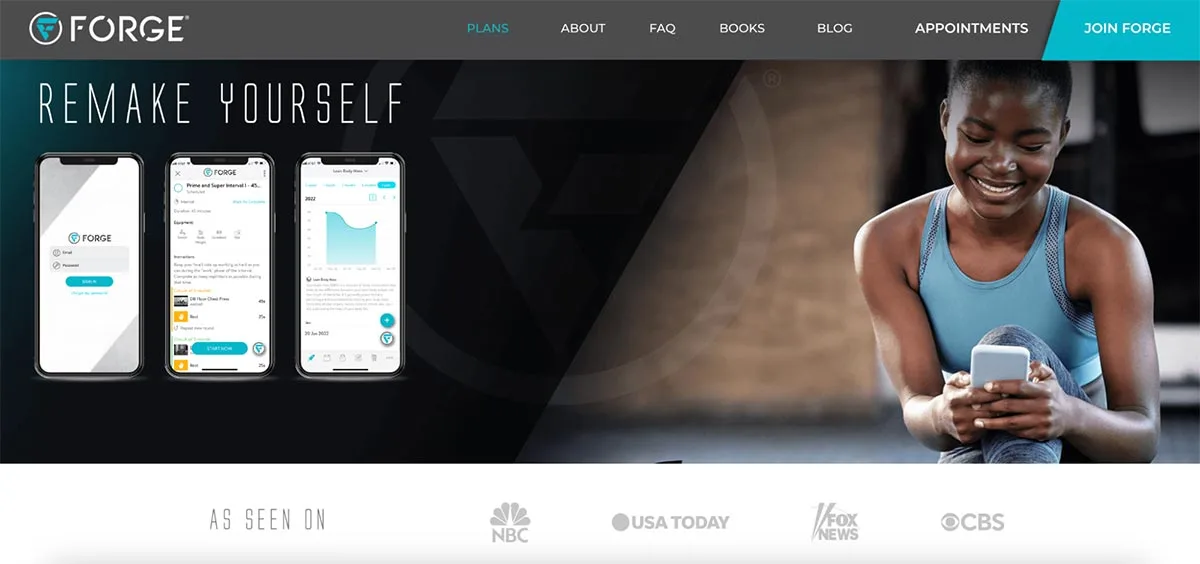
Let’s look at some of the ways Forge, an online personal training service, builds trust with potential customers. For starters, their website is clean, easy to navigate, and professional-looking. In addition, they include the logos of media outlets that have featured their service to communicate their credibility and legitimacy. Forge also knows that social proof is important, so they have video testimonials on their site from real-life customers who’ve had success with the service.
2. Advertise with ecommerce in mind
Targeted advertising is not just about reaching the right audience (aka your target market). It’s also about delivering the right message to encourage the result you want. So if you’re using targeted advertising to drive online sales, make sure your ad creative and calls-to-action (CTAs) are tailored to your goal.
With Yelp Audiences, you have total freedom when it comes to the content and copy you want to use. This lets you design your ads for your end goal and online offerings. So you get to decide if you want to highlight your free two-day shipping, your convenient online booking portal, or your e-commerce store or mobile app.
What’s more, Yelp’s platform also supports online sales by letting you include a custom CTA in your on-platform ads. For example, a pest control company can set up ads using a “Schedule Appointment Now” CTA, which directs users to an online scheduling platform from their Yelp Showcase or Yelp Search Ads. For retailers, it’s easy to put a “Visit Website” CTA directly in their Yelp Showcase or Search Ads to connect users directly to their e-commerce website.
3. Embrace social commerce
Encourage online sales across your digital marketing channels, including on social media. You’re probably already promoting your products and services through your posts. But if you want to boost online sales, you also need to make it easy for your followers and viewers to buy what you’re promoting. The ability for people to buy products directly from social media platforms is known as social commerce.
It’s estimated that $992 billion in global sales were made via social media in 2022, and this number is expected to grow. So now’s the time for your brand to embrace social commerce.
Depending on which social media platforms your brand uses, there may be different social commerce options. For example, Instagram Shopping allows businesses to create a shop full of collections, product pages, prices, and even an in-app checkout process.
Here’s what Office Depot’s Instagram shop looks like, with curated collections for both small businesses and home offices.
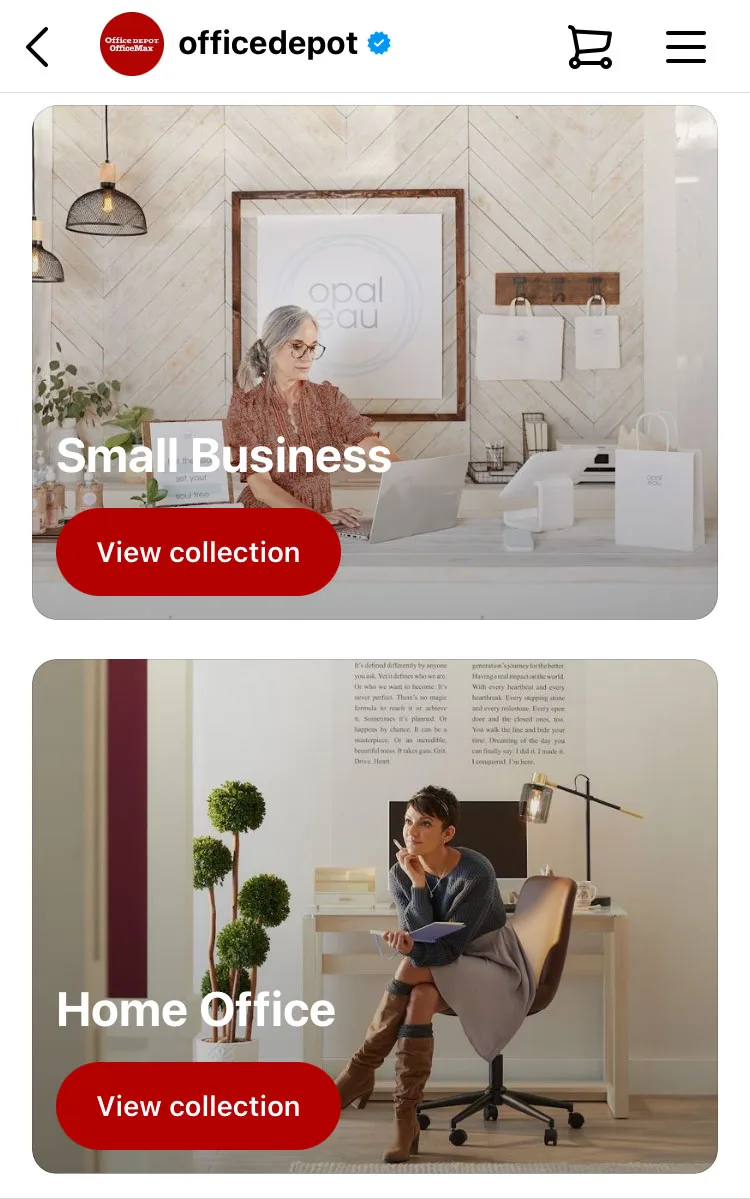
Products from an Instagram shop can even be tagged in Instagram posts and ads to let people explore and buy items that catch their eye. Not only does that help your brand capitalize on impulse purchases, but it’s a much better customer experience than your followers having to ask questions such as, “What chair is that? Is it currently available? Does it come in other colors? How much is it?”
For example, Home Depot posted about griddles and linked each product in the image to its product page on their Instagram shop. Anyone viewing the post could easily learn more and make an online purchase.
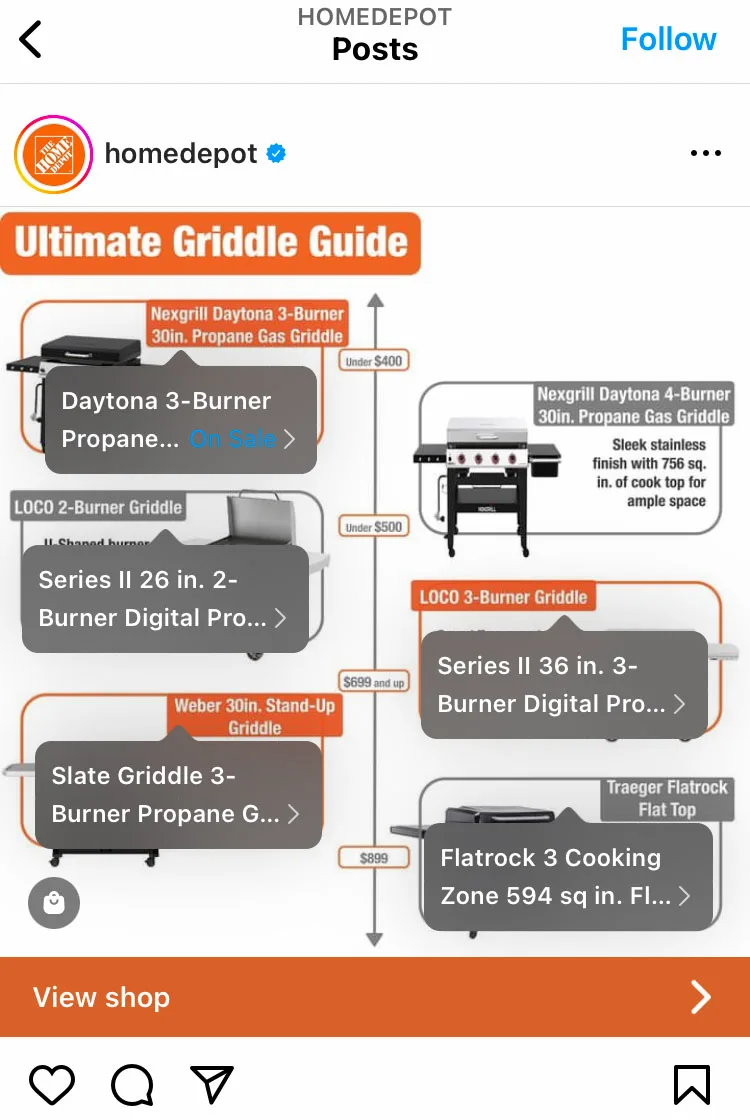
If you work with influencers on Instagram, they can help you boost online sales by linking to your shop when they post about your products.
Other social commerce programs, include:
Even if you’re not ready to go all in on social commerce, be sure to optimize your social media profiles by including a link to your e-commerce site, and if you work with influencers, provide them with affiliate links to your online store. And if you’re a brand with both in-person and online shopping options that’s looking to boost online sales, give your influencer partners an online-only discount code to share and encourage customers to order from you online instead of in-store.
4. Enhance the checkout experience
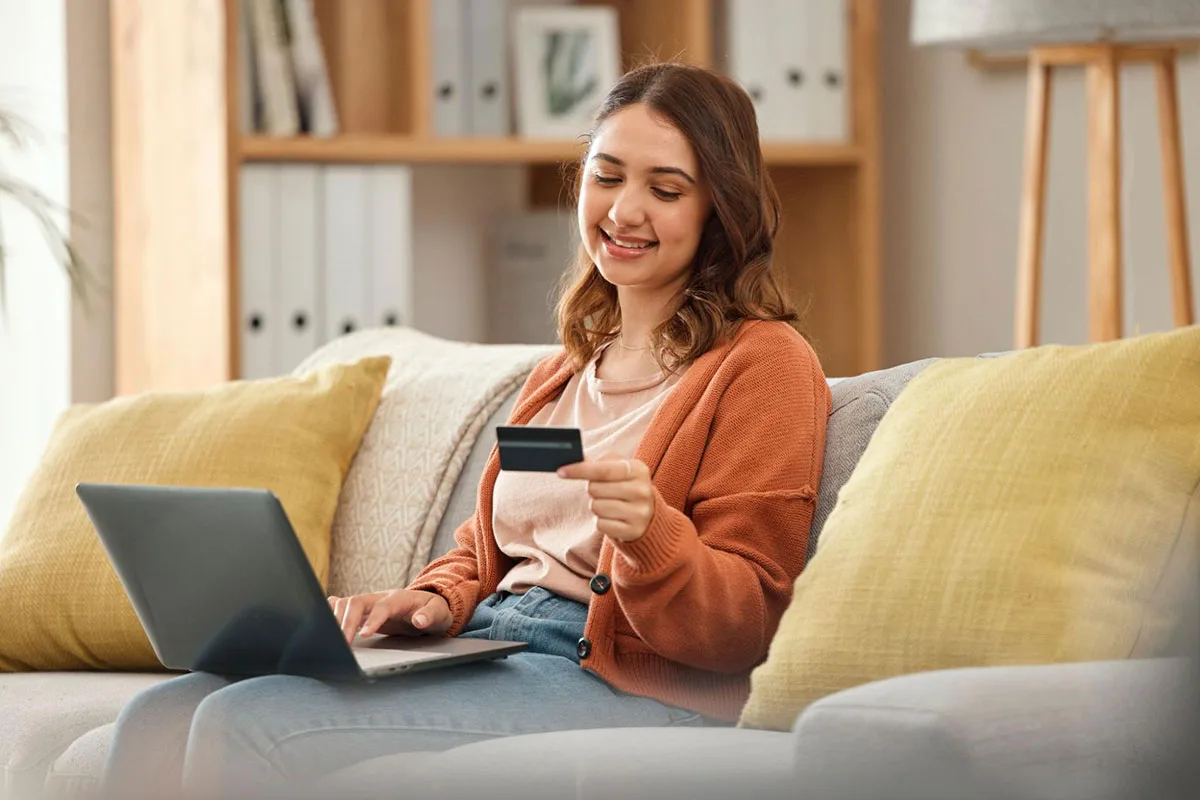
The Baymard Institute recently reviewed 49 different studies and calculated that the average shopping cart abandonment rate in global e-commerce is 70.19%. For online enterprises, this represents a huge opportunity to increase sales.
While the reasons for shopping cart abandonment vary, many of them can be addressed by creating a better checkout experience. For example, 26% of users reported abandoning a shopping cart because the site wanted them to create an account, and another 22% reported abandoning carts because the checkout process was too long or complex.
To improve your site’s user experience during checkout, follow the checklist below:
- Clear and intuitive interface: The checkout page should be user-friendly, and it should feature prominent calls-to-action (CTAs) that guide customers through each step.
- Minimize distractions: Remove unnecessary elements or links that may divert customer attention away from completing the purchase.
- Offer guest checkout options: These options should allow new customers to streamline the purchase process without creating an account. Instead, you can design your guest checkout to give customers the option to automatically create an account using the information they provided during the checkout process.
- Make costs transparent: Would-be buyers often abandon shopping carts because of higher-than-expected shipping costs or unanticipated fees. Clearly outline product prices, taxes, shipping fees, and any additional charges before customers proceed to the checkout.
- Accept diverse payment methods: Today’s customers are using a variety of payment options. Be prepared to accept not only debit and credit cards but also alternative payment methods like PayPal, Apple Pay, and more.
- Make the checkout process mobile friendly: Optimize pages and forms for mobile devices as well as for desktop so that people can easily add their name, address, payment information, and other details.
5. Provide online purchase incentives
Online purchase incentives can encourage a customer to choose you over a competitor or choose your online purchase option over in-store shopping. Think of these incentives as part of your value proposition. They help to set you apart and give your customers extra reasons—like increased convenience or savings—to complete an online sale.
Some of the online purchase incentives you can offer include:
- Fast and free shipping: Part of encouraging a customer to shop online instead of in-store is convincing them it’s just as convenient. According to recent data, 76% of consumers think free shipping is necessary for a convenient online shopping experience, and 66% think fast shipping is necessary—making free and fast shipping a great incentive to offer in order to boost sales online.
- Free and easy returns: Customers are looking for a convenient returns process when online shopping as well. According to the same data, 63% want free returns, 51% want mail-in returns, and 43% want generous return windows. Ensuring a free and easy return process can alleviate the concerns of potential customers who worry about being stuck with an online purchase that doesn’t meet their needs or expectations.
- Exclusive online discounts and promotions: By offering exclusive promotions and discount codes for online purchases, you can encourage customers to shop online instead of with a competitor. You can even follow-up with customers who have left items in their cart and provide them with a limited-time discount code to encourage them to click the order button.
- Customer loyalty programs: Be sure your loyalty program has online-specific perks so that customers are encouraged to make purchases on your website. You may even allow customers to earn double points for online purchases, making that a more attractive option than in-store purchases.
Target is a great example of a retailer who has successfully incentivized online purchases. They offer free two-day shipping on orders over $35 and free returns. Plus, Target tries to make returns as convenient as possible by offering a 90-day return period and allowing customers to make returns in store, via drive up, or through the mail.
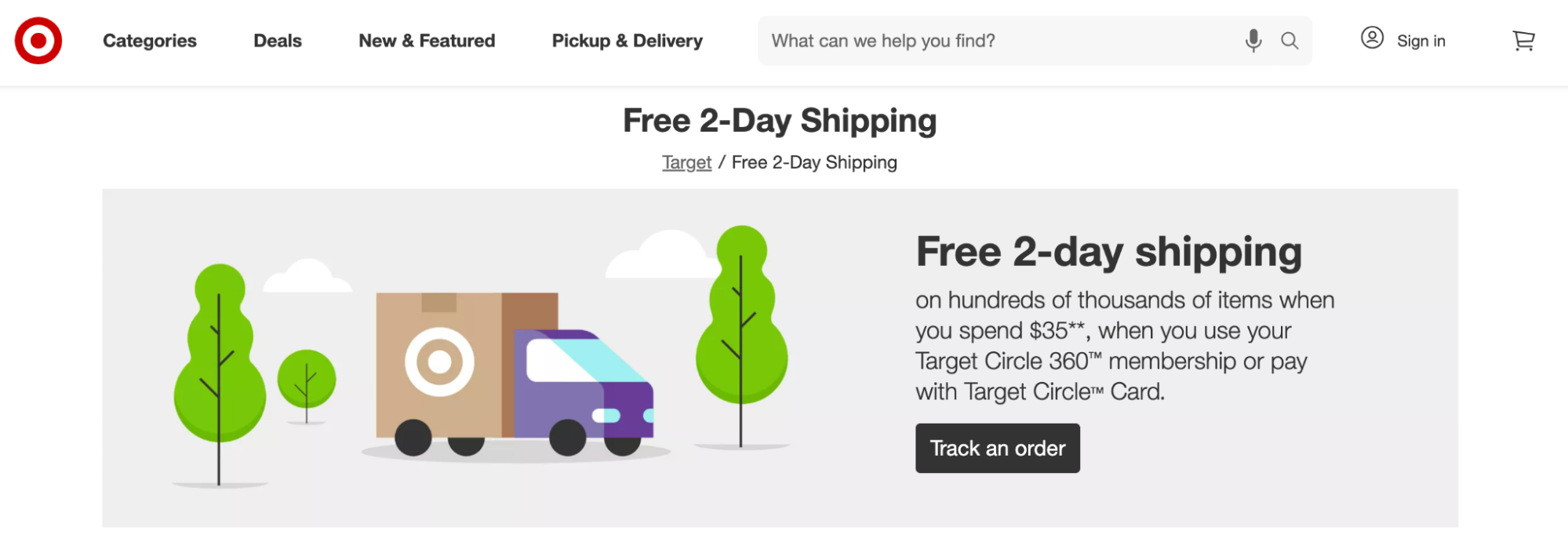
6. Make it easy for customers to learn about products
Online shopping comes with one major obstacle: Customers can’t pick up products in their hands, read the packaging, and make a first-hand impression of a product like they would when they’re shopping in-store. That’s why it’s crucial to make it easy for customers to learn about products. Give them all the information they need—in a user-friendly, accessible way—to encourage an online purchase decision.
And how can you do this? Try the following:
- Make sure product pages feature images of the product from multiple angles.
- Create videos of products in use.
- Write thorough product descriptions and FAQ sections to make it easy for customers to find all of the details and specifications they may need.
- Include how-to instructions so that customers understand not only various uses for the product but also exactly how to use the product for best results.
- Provide details about sizing and not just for apparel but for all items so that people can get a sense of scale.
- Implement an on-site chatbot that customers can use to ask questions about products.
- Make it easy for customers to compare similar products so they can choose the right one for their needs.
- Bundle products that go together to encourage cross-selling, and make it easy for customers to match up the right items.
- Feature user-generated content on product pages, including reviews and real-life images from other customers, to provide social proof that affirms product quality.
- If applicable, consider providing virtual try-on or “see it in your home” options.
Apple is a great example of a brand that makes it easy for customers to get a sense of a product’s look and feel when shopping online. Their current landing page for the iPhone 15 Pro features a 3D rendering of the phone so that it can be moved around and seen from every possible angle.
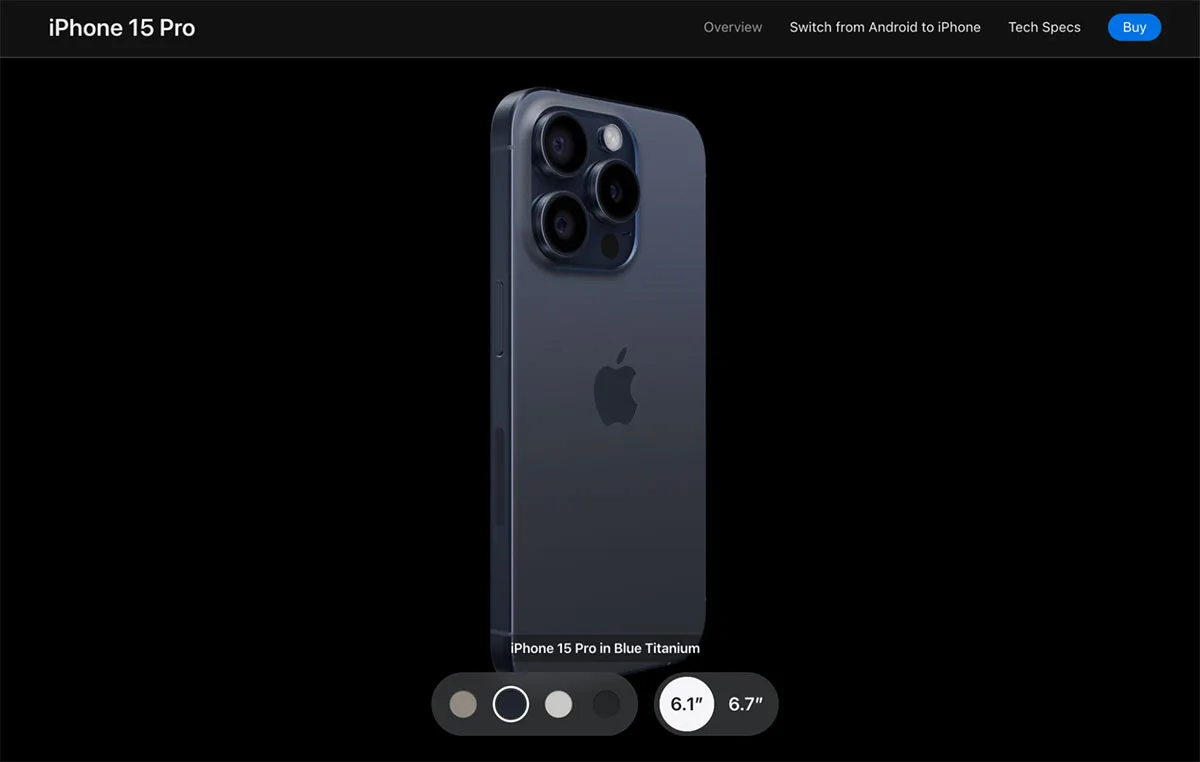
And these tips aren’t just for brands who sell products. The same concepts can be applied to online services as well.
H&R Block is a service-based enterprise that handles online accessibility well. The brand’s “Help me choose” feature guides potential customers through their different tax prep options. By asking basic questions about how much help someone is looking for and the types of income they earn, the customer is given a suggestion for the best service tier for their needs.
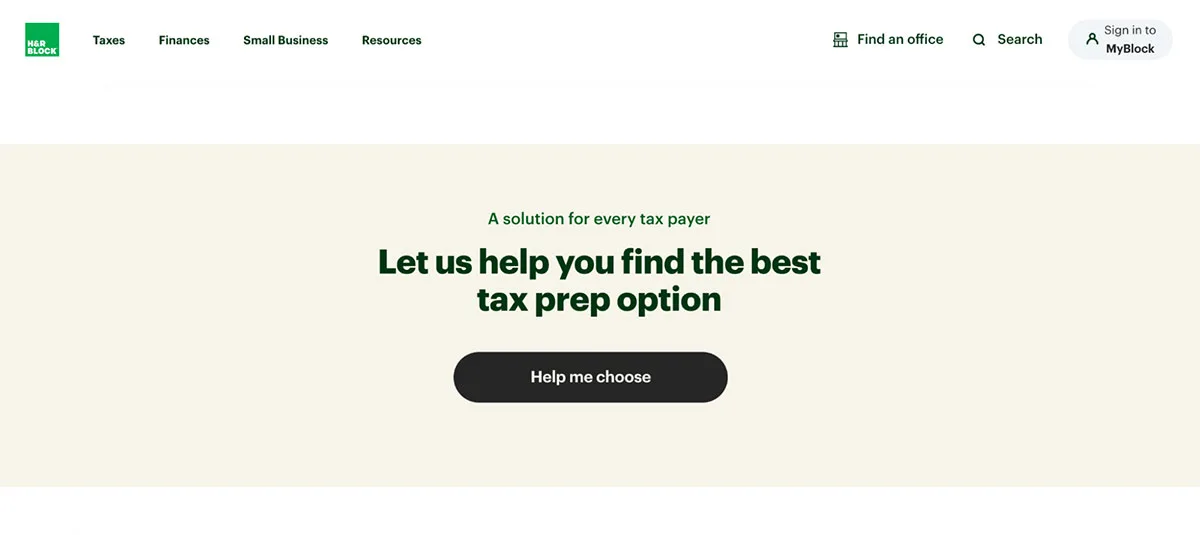
Start maximizing online sales for your enterprise
Maximizing online sales for enterprises is a complex process in which you’ll leverage a variety of strategies. You want to:
- Make sure your website is ready for e-commerce
- Advertise with e-commerce in mind
- Embrace social commerce
- Enhance the checkout process
- Provide online purchase incentives
- Make it easy for customers to learn about products
For more business-boosting inspiration, discover how three brands were able to drive more leads, convert more customers, and increase foot traffic.